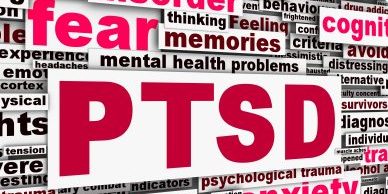What is Battered Woman Syndrome?
Domestic violence is recognized by the mental health field as part of gender violence for over 30 years now.[1] Statistically, more women than men are the victims of physical, sexual, and psychological abuse, as gender violence is often fostered by the old-school social standard that men should be more powerful than women[2]; therefore, some men feel the need to exercise their power and control women with violence.[3] In some women victims, Battered Woman Syndromepsychological symptoms, called battered woman syndrome can develop, making it difficult for them to regain control of their lives.[4] However, according to Lenore E. Walker, Ed.D., ABPP-CL, mental health workers have been able to assist these women with certain empowerment techniques and other proper treatment strategies, described in her article “Battered Woman Syndrome: Key Elements of a Diagnosis and Treatment Plan.”4
The DSM-IV places battered woman syndrome as a subcategory of posttraumatic stress disorder (PTSD). Walker states that the following steps will help mental health workers obtain the most accurate information when interviewing a woman who may be the victim of domestic violence.4 First, speaking with the woman without her partner present, if they are still in a relationship, is important, so that a safety plan may be formed.4 Oftentimes, the partner may demand on being present during doctor visits, as to remind the woman not to say anything about the abuse; therefore, this may be difficult.4 It is also important to remember that the most dangerous time for the woman is when she and her partner are discussing separation, and even when the woman is no longer living with her abuser, she still is not completely safe.[5] Individual and group therapy is recommended initially.4
Second, a woman needs to feel validated when she describes her abuse, and mental health workers can achieve this by putting an emphasis on the positive things she did to protect herself.4 According to Walker, it is important to state that no matter what, no one deserves to be abused.4 Therapy should also emphasize the woman’s strengths so that she may learn to trust herself and eventually others, once again.4
Treatment for Battered Woman Syndrome
When first meeting with the woman, it is important for a risk assessment to be completed, as well as a mental status examination.4 Some women may have disorders that are comorbid with PTSD and battered woman syndrome.4 Also, to assess the risk the woman is at for abuse, she should be asked to describe the first abusive incident that she remembers, the worst incident she remembers, the last incident that happened before she reached out for medical health, and what typical incidents are like.4 With this information, a mental health worker may determine the level of risk and lethality the woman faces.4
A treatment plan should be formed between the counselor and the woman.4 Gathering information about the woman’s childhood is useful, but may not be the first area to explore, as many are not ready to do so until later in the treatment process.[6] The woman may be asked about the factors that made it difficult for her to leave the relationship, if she has.6 According to Walker, oftentimes mental illness and previous trauma are not specified by women interviewed, but learned helplessness and drug abuse usually are.4 In many cases, medicines may be discusses as a part of therapy; however, it is always the woman’s decision.4 Mental health workers should encourage the woman to engage in different types of social activities with others, to help her overcome isolation and feeling powerless.4
Treatment for PTSD, specifically battered woman syndrome, includes a combination of feminist and trauma therapy.4 Feminist therapy helps to identify specific situational factors that are out of the woman’s control and help her accept that she can still change the factors that are in her control.4 On the other hand, trauma therapy help the woman understand that she is not the only one dealing with the psychological symptoms of battered woman syndrome, and through certain techniques, she is able to overcome those symptoms and deal with her situation.4 Also, trauma triggers need to be identified, and behavioral techniques, such as relaxation training and guided imagery, should be used to reduce their affect.4 Some typical trauma triggers are curse words the batterer shouted before the abuse, a particular phrase he said to humiliate and demean the woman, the smell of his aftershave, or the look in his eye before the abuse would begin.4 For some women, these trauma triggers never go away, while others are able to overcome them eventually.4
In Conclusion: Battered Woman Syndrome
Battered woman syndrome is a subcategory of PTSD, and it develops in women who are the victims of domestic violence. Symptoms of battered woman syndrome may resolve after the woman is safe and out of the relationship; however, some need extensive psychotherapy or medicine to help them regain control of their lives.
[1] Bureau of Justice Statistics Selected Findings. Violence Between Intimates (NCJ-149259). Washington, DC: US Department of Justice; November 1994.
[2] American Psychological Association Presidential Task Force on Violence and the Family. Violence and the Family. Washington, DC: American Psychological Association; 1996.
[3] Goodman LA, Koss MP, Fitzgerald LF, et al. Male violence against women. Current research and future directions. Am Psychol. 1993;48:1054-1058.
[4] Walker, L.E. (2009, July 7). Battered Woman Syndrome: Key Elements of a Diagnosis and Treatment Plan. Psychiatric Times. Retrieved from http://www.psychiatrictimes.com/trauma-and-violence/content/article/10168/1426560.
[5] Centers for Disease Control and Prevention. Behavioral risk factor surveillance system 2005 report; 2006. http://ftp.cdc.gov/pub/data/brfss/2005summarydataqualityreport.pdf.
[6] Walker LE. The Battered Woman Syndrome.3rd ed. New York: Springer Publishing Company; 2009. battered woman syndrome.




Women and children who are victim of different kinds of abuse usually suffers from PTSD.